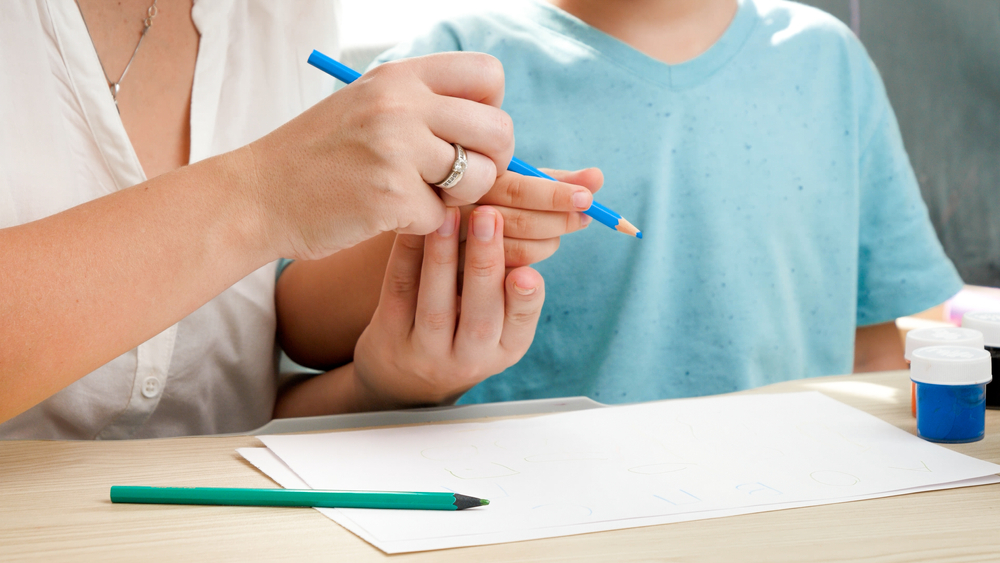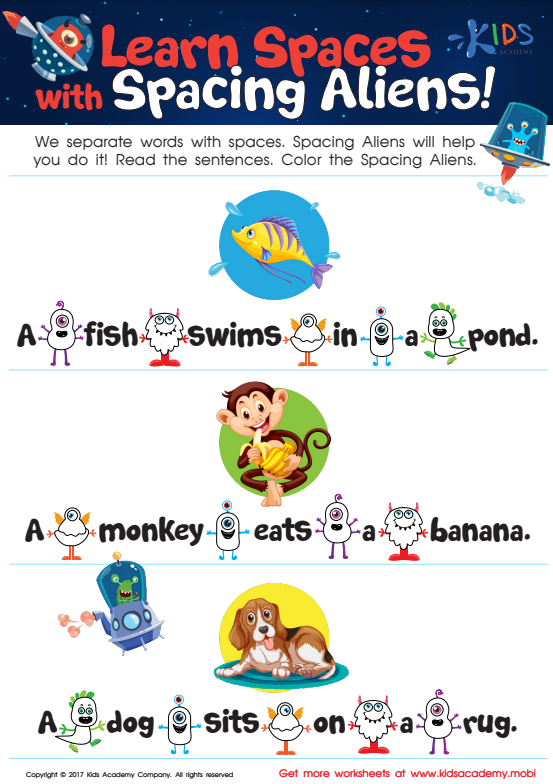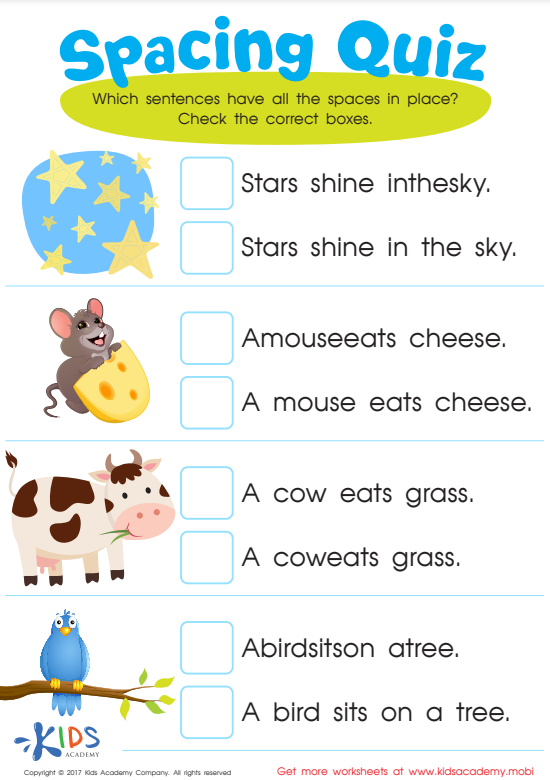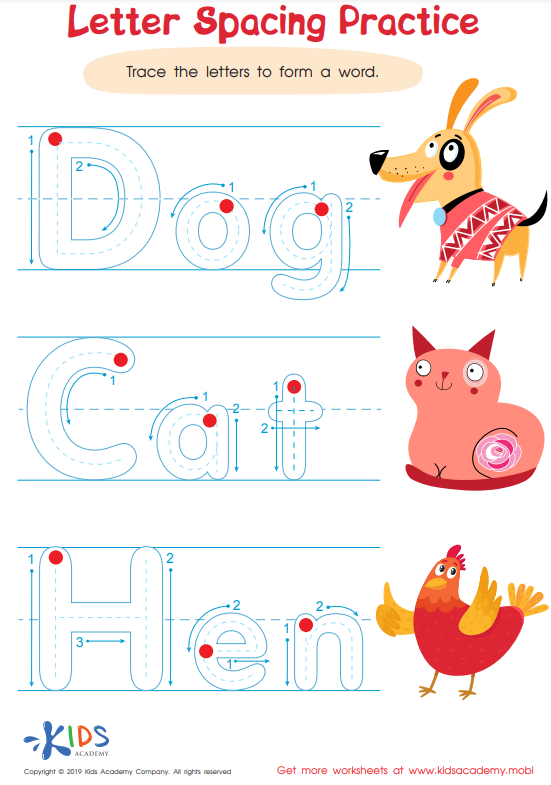-
English
-
English Pre-K
-
Unit 1: Early Literacy Skills
-
ABCs
- Pre-writing Activities
- Letter A
- Letter B
- Letter C
- Letter D
- Letter E
- Letter F
- Letter G
- Letter H
- Letter I
- Letter J
- Letter K
- Letter L
- Letter M
- Letter N
- Letter O
- Letter P
- Letter Q
- Letter R
- Letter S
- Letter T
- Letter U
- Letter V
- Letter W
- Letter X
- Letter Y
- Letter Z
-
Phonological Awareness
- Rhyming Words
- Letter Sounds B, C, D, and F
- Letter Sounds G, H, J, and K
- Letter Sounds L, M, N, and P
- Letter Sounds Q, R, S, and T
- Letter Sounds V, W, X, Y, and Z
- Letter Sounds A, E, and I
- Letter Sounds O and U
- Beginning Sounds
- Matching Letters to Sounds
-
ABCs
-
Unit 2: Vocabulary
-
Common Words
- Sorting Words into Categories
- Color Words
- Verbs and Adjectives
-
Sight Words
- Sight Words 'I' and 'Can'
- Sight Words 'You' and 'Like'
-
Common Words
-
Unit 3: Print Awareness
-
Parts of a Book
- Working with a Book
- Spaces Between Words
- Text and Illustrations
-
Picture Books and Poems
- Picture Book Text Features
- Poem Text Features
- Signs and Labels in the Community
-
Parts of a Book
-
Unit 4: Reading Literature
- Questions About Stories
- Discussing Stories
-
Unit 5: Reading Informational Texts
- Retelling Details in a Text
- Questions About a Text
- Connections Between Events
- Text Features
- Describing Illustrations
-
Unit 1: Early Literacy Skills
-
English Pre-K
-
Math
-
Math for Pre-Kindergarten
-
Logic and Geometry
-
Matching and Sorting
- Same and Different
- Which One Is a Little Different?
- Objects That Go Together
- Sorting by Color and Size
- Sorting The Same Group in Different Ways
- Patterns
-
Shapes
- Shapes in Our Environment
- Naming Shapes Regardless of Size
- Making Shapes in Preschool
- Comparing Shapes
- Relative Positions
- Sorting Shapes
-
Matching and Sorting
-
Early Number Sense
-
Numbers 1–5
- Counting to 3
- Counting to 5
- Arranging Objects up to 3 Objects
- Arranging up to 5 Objects
- Writing Numbers 1–5
-
Numbers 1–5
-
Numbers up to 10
- Counting to 10
- Arranging up to 10 Objects
- Number 0
- Writing Numbers 6–10
- Breaking Down Numbers 6-10
-
Logic and Geometry
-
Math for Pre-Kindergarten
Spaces Between Words
Your child is picking up new words and enjoying it when you read aloud to them. Print is a complex system with structured rules. The role of capitalization, punctuation, and grammar is paramount to effective communication. Words on the page are organized in a format that is easily understood.

The English language uses a space to separate each written word. Early literacy instruction includes identifying spaces between words. Additionally, young writers need concrete models to help them space words in their independent writing. Keep reading to learn five engaging activities to help your child understand spaces between words.
Five Activities to Practice Letter Spacing
Most children need help applying word spacing in their own writing. When reading aloud to your child, have him concentrate on finger pointing to each word. This reinforces spacing, the direction of left to right, and the return left swoop at the end of the line. Kids Academy has curated print awareness activities including these word- and letter-spacing worksheets featured here:
Try these five recommendations for practicing word spacing in writing.
Fingerprint Finger Spaces
Give your child an ink pad to make prints at the spaces between each word in his writing. The fingerprints should be done with the opposite hand, not the writing hand.
Grid Paper
Older children who still have not mastered spaces between words can benefit from grid paper. Quarter-inch squares are a good size for older children. Use half-inch grid paper for younger writers. Model how to write each word in its own separate box. This is particularly helpful in math when spacing between numbers.
Marshmallow Spaces
Use a sweet treat, like marshmallows, cereal pieces, or candy to put as a marker between words. Your child can remove the sweet treats after the entire writing piece is completed to see the spaces.
Spacing Tool
Get craft and create a spacing tool for your child to use as a guide. Appeal to your child’s interest for motivation. For example, if your child is really into butterflies, you can place a small plastic butterfly clip on the end of a craft stick to use as a spacing tool. This can also double as a finger-pointing tool.
Stickers and Stamps
Many children enjoy using stickers and stamps between words. Use this method sparingly because the stickers will crowd the paper and your child won’t see the spacing that you’re trying to reinforce.
Choose an activity that matches your child’s interest. Vary your approach to make learning fun for your child.




